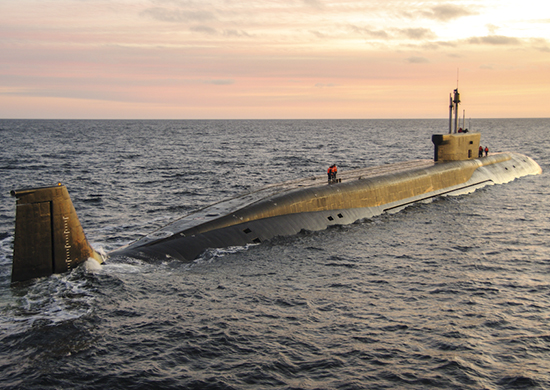 Photo Courtesy of Russian Federation Ministry of Defense
Photo Courtesy of Russian Federation Ministry of Defense
Nuclear Safety in the Post-INF World
Last week seven Russians were killed in a mysterious explosion during testing of a new nuclear-powered cruise missile. These are only the latest casualties resulting from the dangerous combination of an accident-prone military plus a secretive government. As landmark nuclear arms-control agreements meet their end, we face a new age of nuclear proliferation, a context which will only increase the likelihood of accident-induced tragedies.
Earlier this month, the U.S. withdrew from the Intermediate-Range Nuclear Forces Treaty, an agreement signed in 1987 by Soviet leader Mikhail Gorbachev and President Reagan. The survival of the New START, which is set to expire in 2021, is also uncertain, and experts fear that without these frameworks, nuclear proliferation could re-emerge in a new arms race. An increase in nuclear weapons is certainly worrisome, but recent events in Russia raise a broader concern about the country’s propensity for fatal accidents, and the government’s unwillingness to admit mistakes or seek assistance.
Official Reticence
Russia’s nuclear agency, Rosatom, waited a full two days before explaining the cause of the accident. While the Russian Defense Ministry claimed that no radiation was released, the city of Severodvinsk 12 miles away and a Russian weather agency both reported spikes in radiation levels. Furthermore, official monitoring stations near the testing ground went ominously silent after the accident, suggesting that the Kremlin aimed to prevent the exposure of evidence.
Moscow has also been unwilling to disclose what actually was going on at the Nenoksa Missile Test Site at the time of the accident. The scientific director of the Russian Federal Nuclear center stated that they were examining “small-scale sources of energy with the use of fissile materials.” Yet according to U.S. intelligence officials, the explosion was more likely caused during a test of the SSC-X-9 Skyfall (or Burevestnik), a nuclear-powered missile that is designed to overcome American defenses, and which Putin has previously claimed could reach anywhere on Earth.
A Pattern of Nuclear-Related Accidents
The recent disaster at the nuclear test site is the most recent (if not the most extreme) example of a pattern of Russian nuclear-related accidents. Since 2000, there have been eleven reported incidents aboard Russian nuclear vessels, costing the lives of at least 163 servicemembers. Recent years have shown a marked increase in the frequency and severity of the accidents. In July, fourteen Russians died after a fire spread on a nuclear submersible; similar fires occurred aboard nuclear submarines in 2015 and 2016. In 2017, a mysterious radioactive cloud covering part of Europe was traced back to a leak from a Russian nuclear reprocessing plant, although Rosatam denied any responsibility. One thing is clear: fatal nuclear-related accidents in the Russian military have become disturbingly common.
Of course, the incident most emblematic of Russian nuclear-related accidents is the Chernobyl disaster of 1986. Memories of the devastating incident seem still to be present among the Russian public. According to a poll conducted by the Levada Center, 30% of Russians still believe that a disaster similar to Chernobyl could “quite possibly” or “pretty likely” occur in the coming years. The Chernobyl disaster was the result of Cold War isolationism and a lack of Russian nuclear safety culture. The stage seems to be set for a repeat of these conditions.
U.S. Response
ASP has written previously about the Russian military’s professionalization problem, and the urgent need to institute reforms addressing both technological and human deficiencies within the force. The combination of an accident-prone Russian military and the demise of historic arms control agreements is a lethal combination, and the Kremlin’s response to the most recent accident shows a worrisome dynamic that could lead to more fatalities.
As the continued failure of the tests cast doubt on the credibility of Russia’s new “doomsday” arsenal, the U.S. answer should not be a single-minded increase in spending on American nuclear weapons, as the Trump administration has proposed. Rather, our focus should be on salvaging and extending arms-control agreements, building on the treaties that were responsible for avoiding nuclear war at the height of the Cold War. Furthermore, the U.S. should strive to assist Russia with professionalization and safety standards of its military in order to promote a nuclear safety culture to avoid further catastrophes.
The lessons of history should not be forgotten. For Russia, that means both the recent pattern of accidents claiming the lives of forty-five servicemembers, as well as the widely-known Chernobyl disaster 33 years ago. For the U.S., history ought not to be forgotten either, as our Cold War past proves that open channels of communication are vital to ensure a world safe from nuclear threats.






